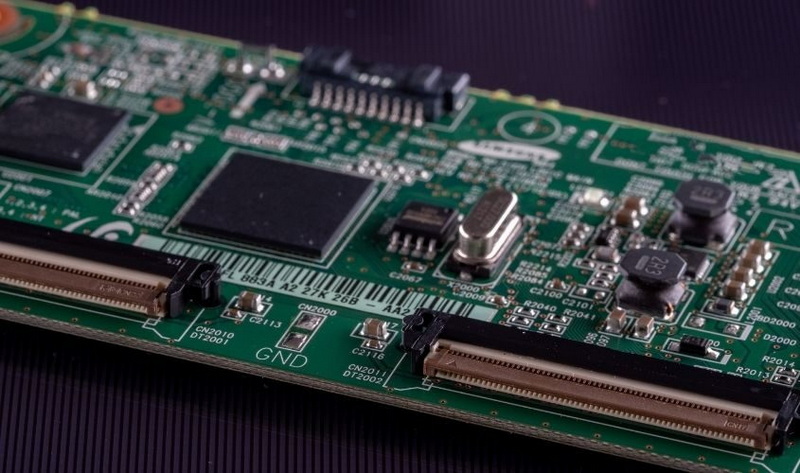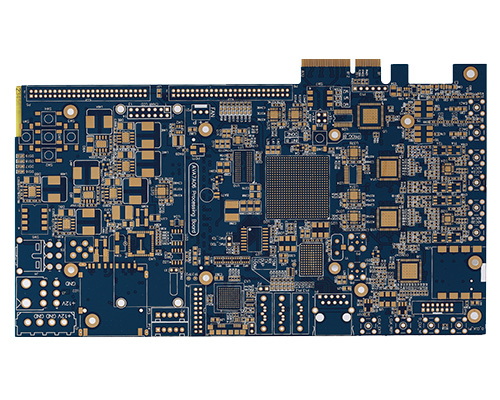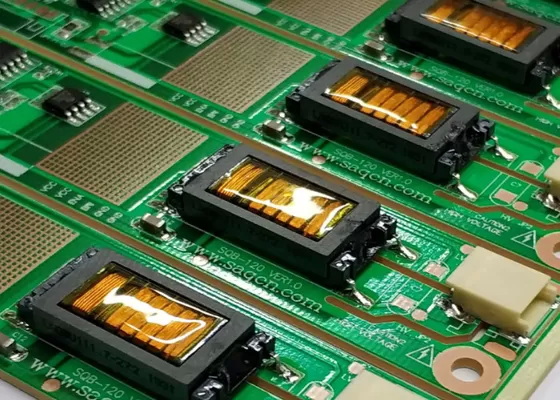Content Menu
● Understanding SMT Technology
● Key Components of an SMT Production Line
● Cost Breakdown
>> Initial Setup Costs
>> Ongoing Operational Costs
● Factors Influencing Costs
● Cost-Saving Strategies
● Advantages of SMT
● Challenges in SMT Assembly
● Future Trends in SMT Technology
● Conclusion
● FAQ
>> 1. What is Surface Mount Technology (SMT)?
>> 2. What are the main components needed for an SMT production line?
>> 3. How much does it typically cost to set up an SMT production line?
>> 4. Are there ongoing operational costs associated with running an SMT line?
>> 5. What strategies can help reduce costs when setting up an SMT line?
● Citations:
Setting up a Surface Mount Technology (SMT) production line is a significant investment for any electronics manufacturing business. The costs can vary widely based on several factors, including the scale of production, the type of equipment selected, and the specific requirements of the manufacturing process. This article will explore the various costs associated with establishing an SMT production line, providing a comprehensive overview for businesses considering this investment.

Understanding SMT Technology
Surface Mount Technology (SMT) is a method used to mount electronic components directly onto the surface of printed circuit boards (PCBs). This technology has become increasingly popular due to its advantages over traditional through-hole technology (THT), including reduced size and weight of components, improved performance, and lower manufacturing costs when produced at scale.
Key Components of an SMT Production Line
To establish an effective SMT production line, several key components are required:
- Pick-and-Place Machines: These machines are responsible for placing components onto the PCB with high precision. They typically account for 60-70% of the total cost of an SMT line.
- Reflow Ovens: Used to solder components onto the PCB after placement, reflow ovens are essential for ensuring strong and reliable connections.
- Solder Paste Printers: These machines apply solder paste to the PCB before components are placed.
- Inspection Systems: Quality control is critical in electronics manufacturing. Automated Optical Inspection (AOI) systems help detect defects in the assembly process.
- Conveyor Systems: These facilitate the movement of PCBs between different stages of the assembly process.
Cost Breakdown
The costs associated with setting up an SMT production line can be categorized into initial setup costs and ongoing operational costs.
Initial Setup Costs
1. Equipment Purchase:
- Pick-and-Place Machines: Prices range from $30,000 to $200,000 depending on capacity and features.
- Reflow Ovens: Costs can vary from $10,000 to $100,000.
- Solder Paste Printers: Typically range from $5,000 to $50,000.
- Inspection Equipment: Costs can range from $10,000 to $100,000.
2. Facility Setup:
- Modifications may be needed to accommodate equipment, including layout changes and installation of proper ventilation and air conditioning systems. This can cost between $50,000 to $200,000.
3. Installation and Calibration: Professional installation services can add another $10,000 to $50,000 to the budget.
4. Environmental Control Systems: Ensuring cleanroom standards can also incur significant costs depending on facility size and requirements.
5. Initial Raw Material Inventory: Depending on production volume, initial material costs can range from $10,000 to $100,000.
Ongoing Operational Costs
1. Labor Costs: Skilled labor is necessary for operating and maintaining the assembly line. Annual labor costs can range from $50,000 to $200,000 depending on workforce size and expertise.
2. Consumables and Materials: Ongoing expenses for solder paste, flux, and other materials typically amount to $5,000 to $20,000 annually.
3. Maintenance and Repairs: Regular maintenance is crucial for minimizing downtime; annual maintenance costs usually range from $20,000 to $100,000.
4. Utilities: Operating an assembly line requires significant energy for machinery and climate control; utility costs can vary widely but typically range from $20,000 to $100,000 annually.
5. Quality Control Measures: Implementing quality control processes adds additional expenses that can range from $10,000 to $50,000 annually depending on the level of inspection required.
Factors Influencing Costs
Several factors can influence the overall cost of setting up an SMT production line:
- Scale of Production: Larger production volumes generally lead to lower per-unit costs due to economies of scale.
- Type of Equipment: The choice between new or second-hand machines significantly impacts initial investment costs. Second-hand machines can provide substantial savings but may come with risks regarding reliability and warranty coverage.
- Location: The geographical location affects labor costs and utilities; urban areas typically have higher expenses compared to rural regions.
- Complexity of Products: More complex products may require additional equipment or processes that increase setup costs.

Cost-Saving Strategies
Businesses looking to set up an SMT production line should consider several strategies to manage costs effectively:
- Invest in Second-Hand Equipment: Purchasing refurbished machines from reputable suppliers can significantly reduce initial capital investment while still providing reliable performance.
- Optimize Production Processes: Streamlining operations through efficient layout design and workflow management can enhance productivity and reduce waste.
- Negotiate with Suppliers: Building strong relationships with suppliers can lead to bulk purchasing discounts and improved supply chain reliability.
- Utilize Automation Wisely: While automation requires upfront investment, it often leads to long-term savings through reduced labor costs and increased efficiency.
Advantages of SMT
The adoption of SMT technology brings numerous advantages that can enhance manufacturing efficiency:
- Compact Size: SMT components are smaller than traditional through-hole components, allowing for higher component density on PCBs.
- Higher Speed Production: Automated placement is faster than manual methods, enabling high-volume production with reduced cycle times.
- Design Flexibility: SMT allows components to be mounted on both sides of the PCB without compromising design integrity.
- Improved Electrical Performance: Shorter connections result in reduced signal delay and more reliable performance at high frequencies.
- Reduced Weight: Lighter components make SMT ideal for portable devices such as smartphones and wearables.
These advantages not only optimize manufacturing processes but also contribute significantly to product performance and market competitiveness.
Challenges in SMT Assembly
While setting up an SMT line offers many benefits, several challenges must be addressed:
1. Solder Joint Issues: Problems such as incomplete solder joints or solder bridges can affect reliability. Solutions include optimizing solder paste deposition and reflow profiles[4].
2. Component Placement Problems: Misalignment during component placement can lead to defects. Using accurate pick-and-place machines with vision systems helps mitigate this issue[4].
3. Quality Control Challenges: Inadequate inspection may lead to undetected defects in assembled PCBs. Implementing automated inspection systems like AOI is essential for maintaining quality standards[4].
4. Material Handling Issues: Efficiently managing materials throughout the assembly process is crucial for maintaining workflow efficiency[5].
5. Environmental Controls: Maintaining appropriate temperature and humidity levels in the production environment is vital for optimal equipment performance[1].
Addressing these challenges through proper planning and implementation strategies will enhance overall efficiency in the SMT production line.
Future Trends in SMT Technology
As technology continues to evolve, several trends are shaping the future of SMT production lines:
1. Increased Automation: The integration of robotics and AI into SMT processes will further streamline operations while minimizing human error[3].
2. Big Data Utilization: Leveraging data analytics will enable manufacturers to optimize workflows based on real-time insights[3].
3. Sustainability Initiatives: There is a growing emphasis on environmentally friendly practices within electronics manufacturing[3].
4. Flexible Manufacturing Systems (FMS): The demand for customization will drive investments in flexible equipment that accommodates varying production runs[3].
5. Miniaturization Trends: Continued advancements in component design will support smaller devices with enhanced functionality[8].
By staying abreast of these trends, manufacturers can position themselves competitively within a rapidly evolving industry landscape.
Conclusion
Setting up an SMT production line is a substantial financial commitment that requires careful planning and consideration of various factors. The total cost can range widely based on equipment choices, facility requirements, labor expenses, and operational needs. By understanding these elements and implementing cost-saving strategies where possible, businesses can establish an efficient SMT line that meets their production goals while managing expenses effectively.

FAQ
1. What is Surface Mount Technology (SMT)?
Surface Mount Technology (SMT) is a method used in electronics manufacturing where components are mounted directly onto the surface of printed circuit boards (PCBs), allowing for smaller sizes and increased efficiency compared to traditional methods.
2. What are the main components needed for an SMT production line?
The main components include pick-and-place machines, reflow ovens, solder paste printers, inspection systems (like AOI), and conveyor systems for moving PCBs through different stages of assembly.
3. How much does it typically cost to set up an SMT production line?
The total cost varies widely but typically ranges from approximately $50,000 for low-medium volume setups to over $800,000 for fully automated high-capacity lines depending on equipment choices and facility requirements.
4. Are there ongoing operational costs associated with running an SMT line?
Yes, ongoing operational costs include labor expenses, consumables (like solder paste), maintenance fees, utility bills, and quality control measures which collectively can add up significantly over time.
5. What strategies can help reduce costs when setting up an SMT line?
Strategies include investing in second-hand equipment for savings on initial capital outlay; optimizing production processes for efficiency gains; negotiating better terms with suppliers for bulk purchases; leveraging automation where feasible for long-term savings in labor costs.
Citations:
[1] https://faroads.com/start-smt-line-guide-2024/
[2] https://www.mpe-electronics.co.uk/2024/10/22/advantages-and-disadvantages-of-surface-mount-technology
[3] https://www.mycronic.com/product-areas/pcb-assembly/news-and-press-releases/news/ten-key-smt-trends-you-need-to-know/
[4] https://www.pcb-hero.com/blogs/lisas-column/surface-mount-technology-common-problems-and-solutions-for-efficient-smt-assembly
[5] https://www.neodensmt.com/news/improve-smt-production-efficiency-48868013.html
[6] https://www.smtfactory.com/Exploring-SMT-Line-Cost-Factors-and-Savings-id43117676.html
[7] https://vectorbluehub.com/smt-assembly
[8] https://emsginc.com/resources/the-evolution-of-surface-mount-technology/
[9] https://www.viasion.com/blog/common-challenges-in-smt-assembly-and-solutions/
[10] https://www.swfuliusmt.com/how-much-would-it-cost-to-set-up-a-pcb-assembly-line/




















